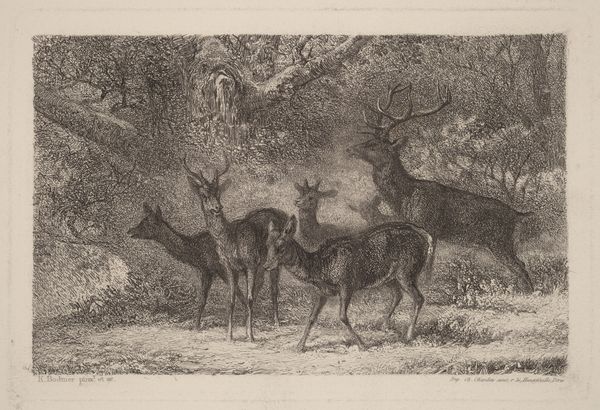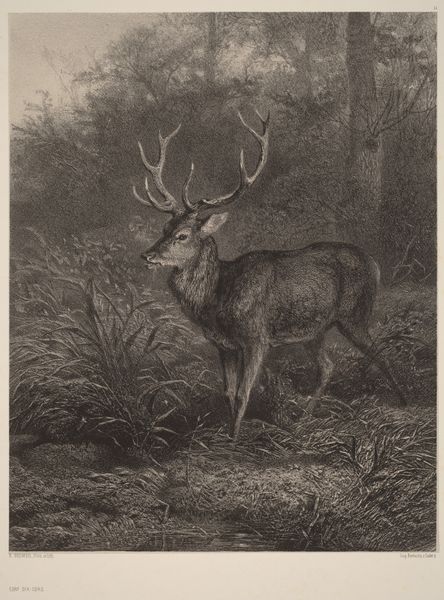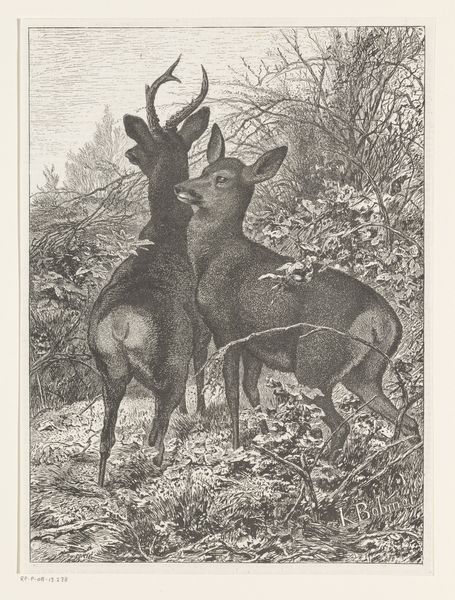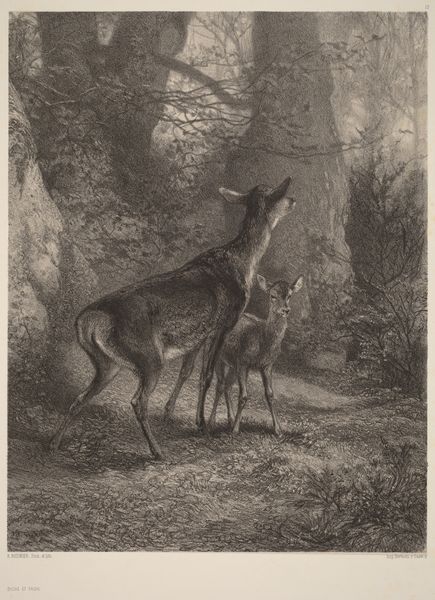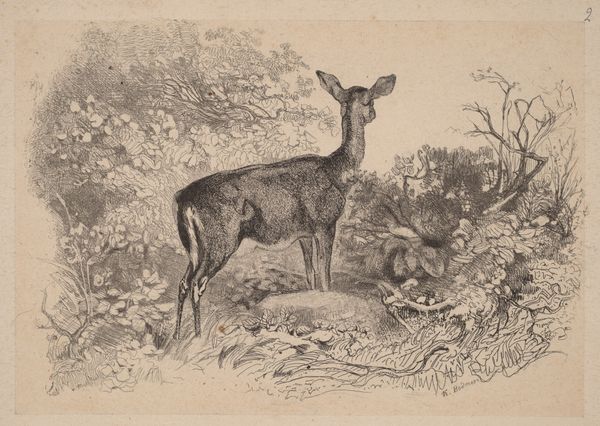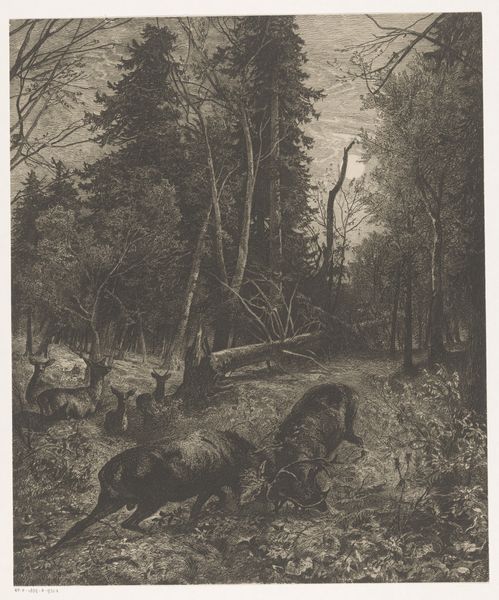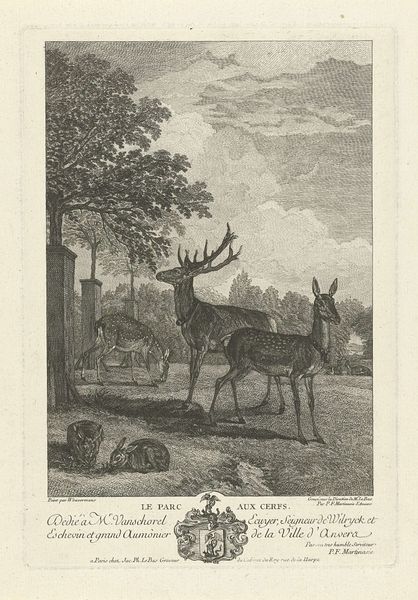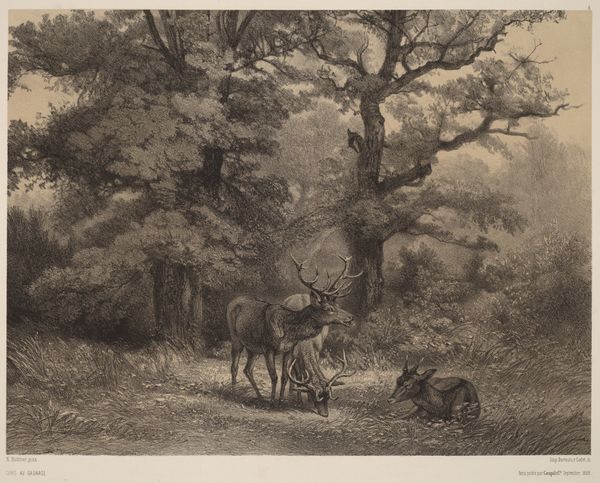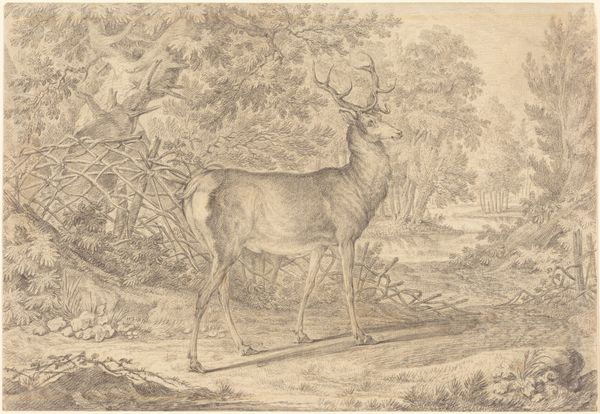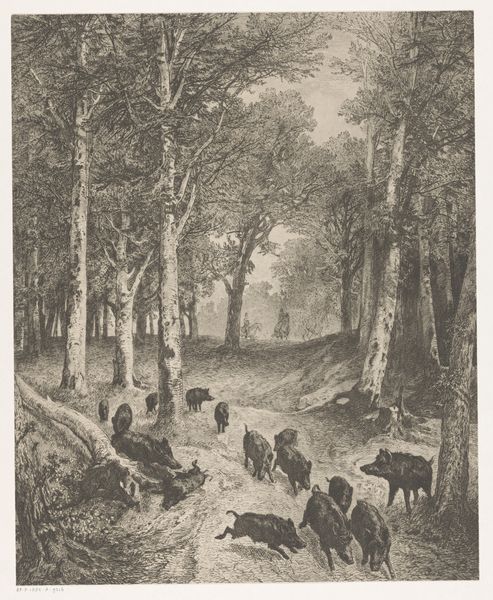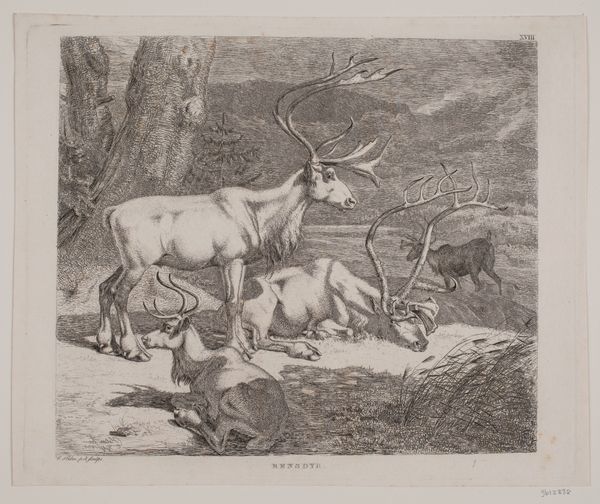
drawing, print, pencil
#
pencil drawn
#
drawing
#
animal
# print
#
pencil sketch
#
landscape
#
charcoal drawing
#
pencil drawing
#
pencil
#
realism
Copyright: National Gallery of Art: CC0 1.0
Curator: Looking at Karl Bodmer’s print, "Biches au repos," what strikes you first? Editor: The quietness of it all, actually. A peaceful gathering of deer, sketched in soft grays, seems to evoke a stillness within the forest. What can you tell me about its context? Curator: Well, the work employs what appear to be pencil and charcoal to portray the resting deer, as the title suggests. Bodmer, though Swiss, created this while working in France. It's likely to have been reproduced via lithography, given the printing industry of the period. Editor: It's intriguing to consider the labor involved. Someone sketched this in situ or from studies. Another transferred the image, probably onto a stone or metal plate, for printing. Then there is the paper it is printed on, its social consumption... Did these depictions have a larger societal purpose, beyond their inherent beauty? Curator: Absolutely. Representations like these fed a burgeoning public interest in the natural world, particularly romanticized visions of it. There's the political dimension too. How and why were the woods depicted this way? Who had access to nature? Editor: That makes me think about the commodification of nature. These prints made the wilderness accessible to urban audiences, perhaps fueling a disconnect with the lived realities of rural life. Also the material transformation of charcoal, wood and metal. It shifts our perception from individual artist genius to broader industries and networks. Curator: Exactly. Bodmer's print reveals a world filtered through both artistic skill and the mechanical reproducibility afforded by printmaking, influencing perceptions of wildlife. Editor: Seeing it with fresh eyes brings me a greater awareness of how even seemingly simple depictions contain social and economic information if we stop to interrogate the entire material production. Curator: For me, seeing these deer brings the social construction of wild places and even 'rest' into focus. We may be viewing wilderness today because others were actively documenting and, indeed, imagining nature, then as well.
Comments
No comments
Be the first to comment and join the conversation on the ultimate creative platform.

